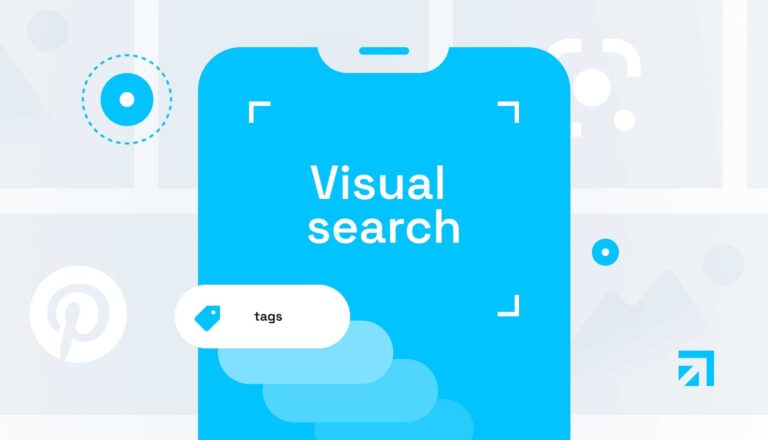
In today’s digital age, the way we search for information is changing rapidly. While text-based searches have been the norm for years, visual search is gaining traction as an exciting and effective way to find products, ideas, and inspiration. This blog post will explore visual search, how it works, and how to optimize your content for image recognition to enhance your online presence.
What is Visual Search?
Visual search allows users to search the internet using images instead of words. Instead of typing a query into a search bar, you upload a photo or take a snapshot, and the search engine uses image recognition technology to find similar images or products. This technology is used by major platforms like Google, Pinterest, and Amazon, making it easier for users to discover content visually.
Why is Visual Search Important?
User Experience: Visual search enhances user experience by providing quicker and more relevant results. Users can find exactly what they are looking for without needing to describe it in words.
Increased Engagement: Visual content tends to engage users more effectively than text. By optimizing for visual search, brands can capture the attention of potential customers who prefer visuals.
Higher Conversion Rates: When users find what they’re looking for more efficiently, they are more likely to make a purchase. Visual search can lead to higher conversion rates for e-commerce businesses.
Staying Competitive: As visual search technology evolves, businesses that adopt these practices early can gain a competitive edge in their industries.
How Does Visual Search Work?
Visual search technology relies on advanced algorithms and artificial intelligence (AI) to analyze images. Here’s a simplified breakdown of how it works:
Image Upload: The user uploads an image or takes a photo using a mobile device.
Feature Extraction: The search engine analyzes the image, identifying key features such as colors, shapes, and patterns.
Image Recognition: The technology compares the uploaded image with a vast database of images, searching for similar or matching items.
Results Display: The search engine presents visually similar images, products, or related content based on the user’s query.
Optimizing Your Content for Visual Search
To take advantage of visual search, it’s crucial to optimize your images and content. Here are some effective strategies:
1. Use High-Quality Images
High-resolution images are essential for visual search optimization. Clear, professional-quality photos not only attract users but also allow image recognition algorithms to identify and analyze them more accurately.
2. Optimize Image File Names
Instead of using generic file names like “image1.jpg,” use descriptive names that include relevant keywords. For example, “red-leather-handbag.jpg” provides more context about the image content.
3. Utilize Alt Text
Alt text is a critical aspect of image SEO. It describes the image to search engines and improves accessibility for users with visual impairments. Make sure your alt text is descriptive and includes relevant keywords. For instance, instead of using “bag,” write “stylish red leather handbag.”
4. Implement Structured Data
Structured data helps search engines understand the content of your images better. By using schema markup, you can provide additional information about your images, such as product details, prices, and availability. This enhances the chances of your images appearing in visual search results.
5. Create Image Sitemaps
An image sitemap is a specific type of sitemap that lists all the images on your website. Submitting an image sitemap to search engines helps them discover and index your visual content more effectively.
6. Focus on Mobile Optimization
As visual search is commonly used on mobile devices, ensure your website is mobile-friendly. Fast loading times and responsive design enhance user experience, making it easier for users to engage with your visual content.
7. Leverage Social Media
Platforms like Instagram and Pinterest are integral to visual search. Share high-quality images on social media, using relevant hashtags and descriptions. Engaging visuals can drive traffic to your website and improve your chances of being discovered through visual search.
8. Encourage User-Generated Content
User-generated content, such as customer photos and reviews, can enhance your visual search strategy. Encourage your customers to share images of your products and tag your brand. This not only provides fresh content but also builds community and trust.
9. Optimize for Local Search
If you operate a local business, optimizing for local visual search is essential. Include location-based keywords in your image descriptions and alt text. This helps users find your business when searching for visually similar products in their area.
10. Monitor Performance and Adapt
Regularly track the performance of your visual content using analytics tools. Monitor which images drive traffic and engagement, and adjust your strategy accordingly. This helps you stay updated with trends and improve your visual search optimization efforts.
Conclusion
Visual search is revolutionizing how users interact with the digital world. By optimizing your content for image recognition, you can enhance user experience, increase engagement, and drive conversions. With high-quality images, descriptive file names, alt text, structured data, and a focus on mobile optimization, your brand can leverage the power of visual search effectively.
As technology continues to advance, staying ahead of visual search trends will keep your business competitive and relevant in the ever-evolving digital landscape. Embrace the power of visuals, and watch your online presence grow!









